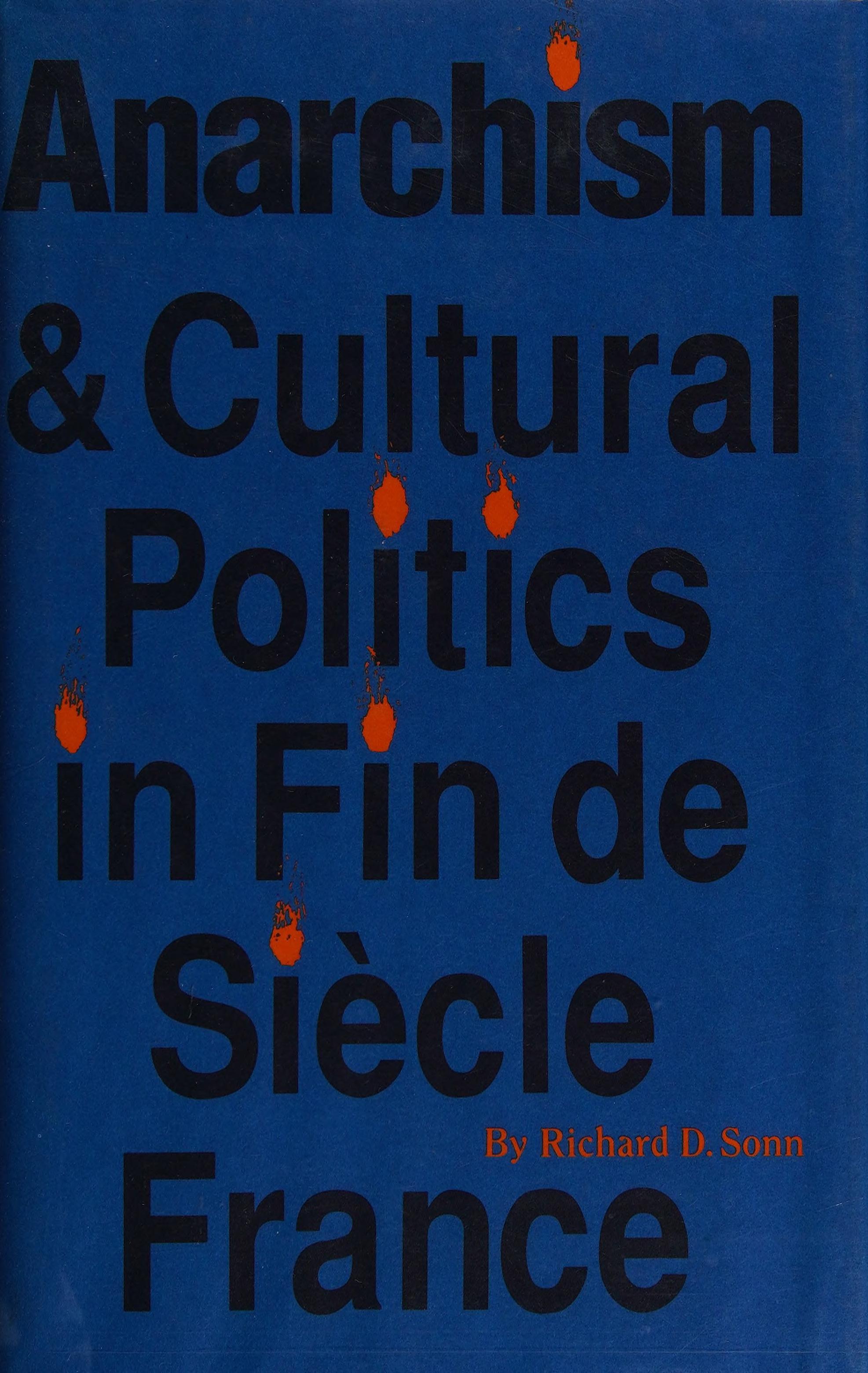Hardcover, 365 pages
English language
Published 1989 by University of Nebraska Press.

Hardcover, 365 pages
English language
Published 1989 by University of Nebraska Press.
“Sonn has revived the topic of French anarchism in the 1890s and revealed to us a new way of looking at it, an impressive achievement by any standard. But the greatest merit of the book lies not in the novelty of his theme but in the audaciousness of his argument and the ingeniousness of the methods with which he constructs it.”—Robert Wohl, University of California at Los Angeles.
Parisian cafés, churches, homes of judges, and seats of power rocked by explosions; heads of state felled by knives; agitators decapitated by the guillotine; high society terrorized by eruptions from the lower depths—all these shocking disturbances bring to mind the anarchist movement in France at the end of the nineteenth century. Portrayed as destroyers of civilization by such contemporary novelists as James and Conrad, the anarchists resisted notions of party discipline and organizational hierarchy. How, then, could their philosophy of radical individualism …
“Sonn has revived the topic of French anarchism in the 1890s and revealed to us a new way of looking at it, an impressive achievement by any standard. But the greatest merit of the book lies not in the novelty of his theme but in the audaciousness of his argument and the ingeniousness of the methods with which he constructs it.”—Robert Wohl, University of California at Los Angeles.
Parisian cafés, churches, homes of judges, and seats of power rocked by explosions; heads of state felled by knives; agitators decapitated by the guillotine; high society terrorized by eruptions from the lower depths—all these shocking disturbances bring to mind the anarchist movement in France at the end of the nineteenth century. Portrayed as destroyers of civilization by such contemporary novelists as James and Conrad, the anarchists resisted notions of party discipline and organizational hierarchy. How, then, could their philosophy of radical individualism generate a movement of such vitality? Could their hatred of state power and authority produce a coherent alternate view of social order?
Richard D. Sonn begins with these probing questions in Anarchism and Cultural Politics in Fin de Siècle France. He finds that beneath the apparent disorder of the period lay a remarkable solidarity, bolstered by the institutions and customs maintained by the anarchists themselves. Moral, social, intellectual, and aesthetic bonds formed a subculture, making French anarchism in the 1890s something more than the expression of utopian dreams or terrorist violence. This culture became institutionalized in the anarchist press; in cabarets, libraries, schools; and in unions where workers sought work and found revolutionary propaganda. In placing the anarchist movement in the cultural context of fin de siècle Paris, Sonn considers its appeal to the lower class and to formerly apolitical artists like Toulouse Lautrec and poets like Mallarme. His book sheds light on literary Symbolism, on Neo-Impressionism and Post-Impressionism in the visual arts, on the cabaret culture of the time, and on the bohemian and working-class milieu because it goes beyond political ideology to reveal the pattern of thought and perception that undergirded anarchism.
Available for loan
https://archive.org/details/anarchismcultura0000sonn.